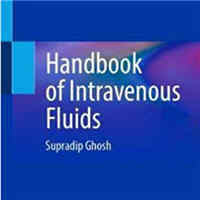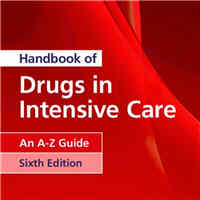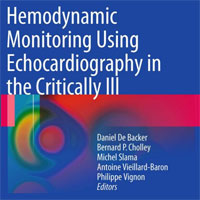Tag: treatment
Low-dose vs. High-dose Magnesium in Rapid Afib
Magnesium sulfate has been used as an adjunct medication for the treatment of atrial fibrillation (AF) due to its ability to lessen sinus node depolarization via calcium antagonism. Prior studies investigating magnesium in... read more
Prolonged Glucocorticoid Treatment is Associated with Improved ARDS Outcomes
Prolonged methylprednisolone treatment accelerates the resolution of ARDS, improving a broad spectrum of interrelated clinical outcomes and decreasing hospital mortality and healthcare utilization. We conducted two sets of... read more
Sepsis is a Preventable Public Health Problem
There is a paradigm shift happening for sepsis. Sepsis is no longer solely conceptualized as problem of individual patients treated in emergency departments and intensive care units but also as one that is addressed as public... read more
Effect of Decompressive Laparotomy on Organ Function in Patients with Abdominal Compartment Syndrome
Decompressive laparotomy has been advised as potential treatment for abdominal compartment syndrome (ACS) when medical management fails; yet, the effect on parameters of organ function differs markedly in the published literature.... read more
Pediatric Sepsis Care Within an Hour Decreases Chance of Death
More than one in 10 children hospitalized with sepsis die, but when a series of clinical treatments and tests is completed within an hour of its detection, the chances of survival increase considerably, according to a new... read more
MAP of 65: Target of the Past?
Septic shock is defined as sepsis with hypotension refractory to fluid challenge and requiring vasopressor support combined with an increase in arterial lactate reflecting impaired cellular energy metabolism and dysoxia.... read more
Vascular Effects of Adrenomedullin and the Anti-Adrenomedullin Antibody Adrecizumab in Sepsis
Sepsis remains a major scientific and medical challenge, for which, apart from significant refinements in supportive therapy, treatment has barely changed over the last few decades. During sepsis, both vascular tone and vascular... read more
Hemophagocytic Lymphohistiocytosis: Potentially Underdiagnosed in ICUs
Overall, 7 out of 9 patients (77.8%) suffering from aHLH remained undiagnosed. Awareness of this life-threatening syndrome, especially in ICUs, should be raised. The inclusion of ferritin into the admission lab panel for... read more
Choice of Fluid Therapy in the Initial Management of Sepsis, Severe Sepsis, and Septic Shock
Sepsis results in disruption of the endothelial glycocalyx layer and damage to the microvasculature, resulting in interstitial accumulation of fluid and subsequently edema. Fluid resuscitation is a mainstay in the initial... read more
Sodium Bicarbonate Therapy for Patients with Severe Metabolic Acidaemia in the ICU
In patients with severe metabolic acidaemia, sodium bicarbonate had no effect on the primary composite outcome. However, sodium bicarbonate decreased the primary composite outcome and day 28 mortality in the a-priori defined... read more
Intracranial Pressure Thresholds in Severe Traumatic Brain Injury: Pro
Teleologically, the mammalian brain has evolved to be the central component of life. It coordinates afferent and efferent neural pathways, integrates neurohormonal responses and, in humans, produces higher cortical effects... read more
Treatment of Acute Non-Anion Gap Metabolic Acidosis
Acute non-anion gap metabolic acidosis is now recognized to be as a common cause of metabolic acidosis, particularly in the ICU. Further examination of its impact on cellular function and clinical outcome are needed. Most... read more
Immunotherapy for Sepsis: A Good Idea or Another Dead End?
THE treatment of sepsis remains an intractable problem in critical care. It has been called the “graveyard”1 for pharmaceutical companies in recognition of dozens of negative clinical trials; this reflects multiple distinct... read more
Warfarin Nonadherence: What Factors Lead Patients with Afib to Discontinue?
Patients with atrial fibrillation (AF) frequently discontinue their warfarin therapy, and a recently-published study offers insight into factors that may contribute to nonadherence. The report, released in JAMA Cardiology,... read more
Sevoflurane for the treatment of refractory status epilepticus in the critical care unit
A 50-year-old woman with liver failure was admitted to critical care for refractory status epilepticus (RSE). Following tracheal intubation, sevoflurane was administered via the MIRUS system (Pall Medical, Dreieich, Germany).... read more
Losing Sleep Over Delirium
Delirium is an acute cognitive disorder that presents with alterations in levels of consciousness accompanied by a change in cognition or perceptual disturbance that develops over a short period (hours to days) and fluctuates... read more
Current efforts to fight sepsis aren’t working. We need a bolder approach
Thanks to antibiotics, vaccinations, and public health advances like modern sanitation, it's easy to think that Americans live largely free of the infectious diseases that once took such a toll. That’s partially right:... read more
Very high intact-protein formula successfully provides protein intake according to nutritional recommendations in overweight critically ill patients
Enteral feeding with VHPF (8 g/100 kcal) resulted in higher protein intake and plasma amino acid concentrations than an isocaloric SHPF (5 g/100 kcal), without an increase in energy intake. This VHPF facilitates feeding according... read more
AKI and Mild Therapeutic Hypothermia in Patients After Cardiopulmonary Resuscitation
The aim of this study was to investigate the influence of mild therapeutic hypothermia (MTH) on the incidence of and recovery from acute kidney injury (AKI). Mild therapeutic hypothermia seems to have a protective effect... read more
Hurt: The Inspiring, Untold Story of Trauma Care
Told through the eyes of a surgeon who has flown on rescue helicopters, resuscitated patients in trauma centers in Houston and Chicago, and operated on hundreds of trauma victims of all ages, Hurt takes us on a tour of the... read more

FIRST-line Support for Assistance in Breathing in Children (FIRST-ABC)
A multicentre pilot randomised controlled trial of high-flow nasal cannula therapy versus continuous positive airway pressure in pediatric critical care. Our pilot trial confirms that, following minor changes to consent procedures... read more
Abnormal Saline and the History of Intravenous Fluids
Two new clinical trials together involving nearly 30,000 patients support previous observational evidence that the most common solution used for intravenous fluid therapy in the world is associated with kidney damage. Both... read more









